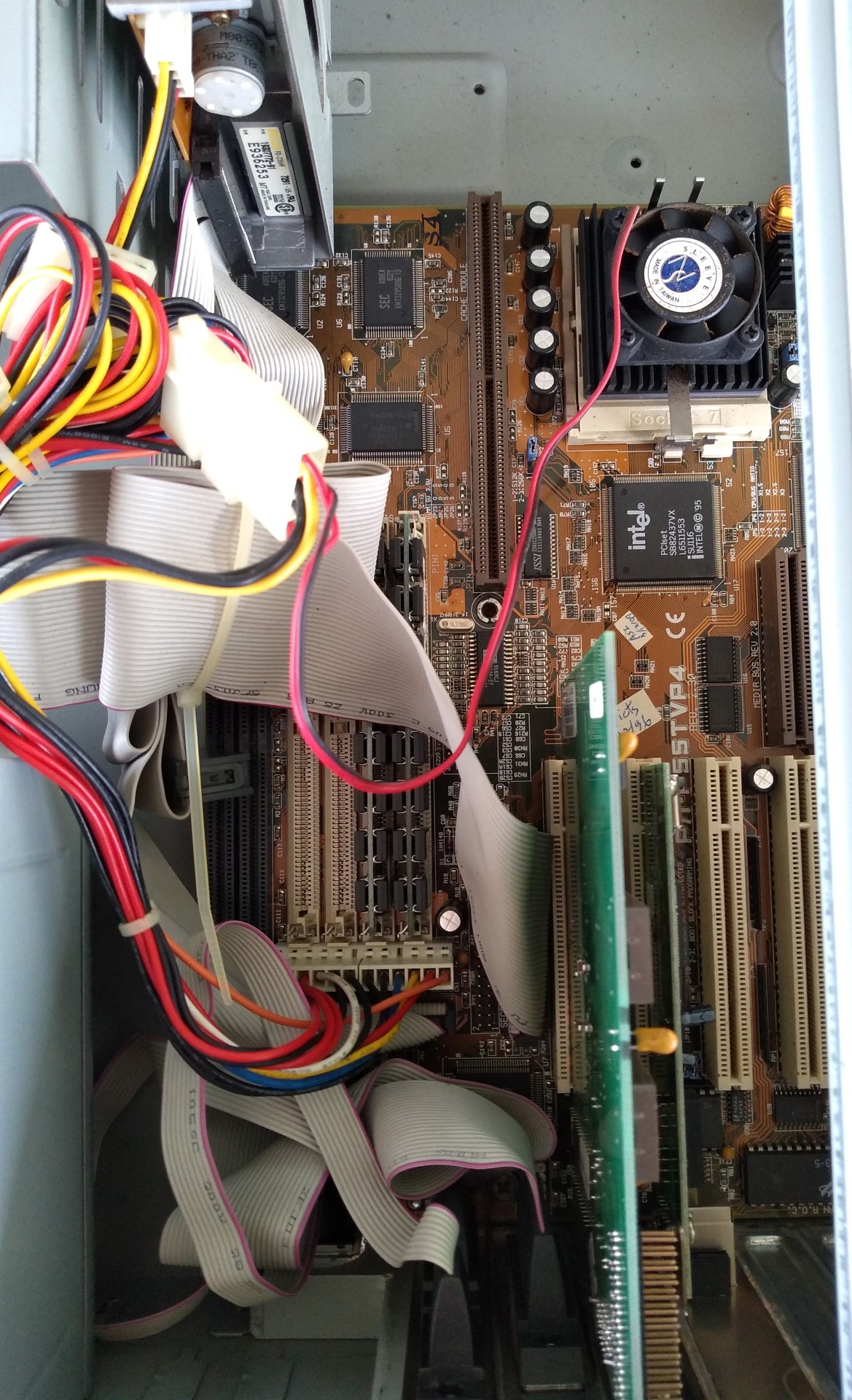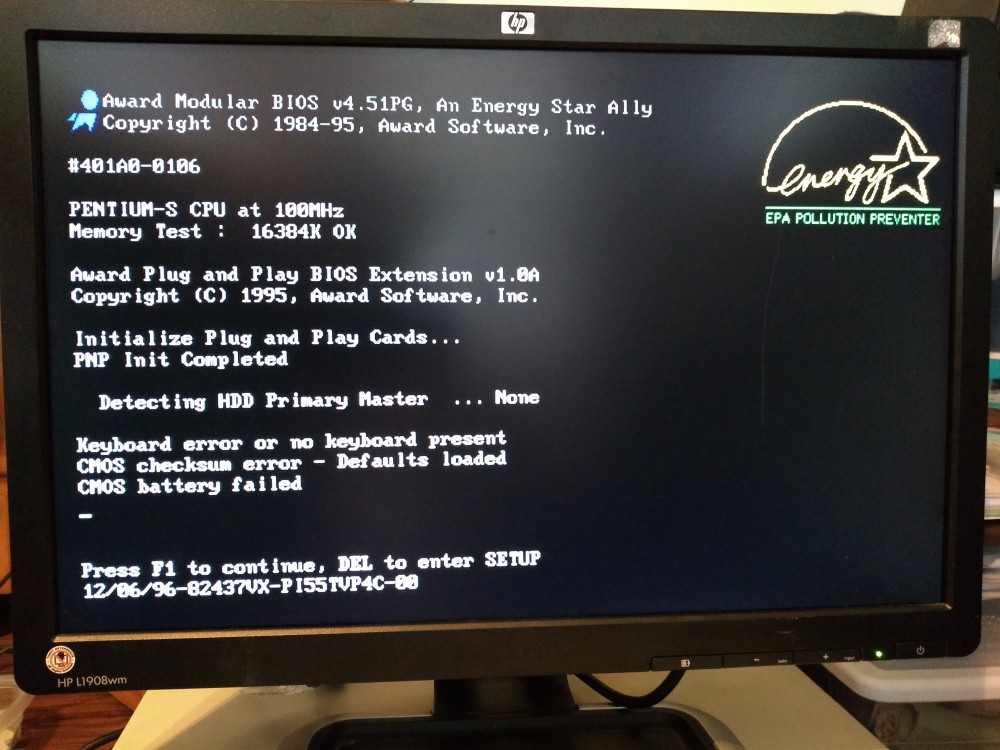One of my motivations for producing the Smug and Play podcast is to replay the Win9X era's greatest games on period-correct hardware. Having chosen December 1994, when PC Gamer Magazine debuted the their monthly demo CD-ROMs, as our starting point, I wanted to put together a machine that could've been built in '94 or '95 but would still be relevant as late as '97 when the launch of the Pentium II heralded the arrival of the distinct, later-90s period. A Socket 7 Pentium rig seemed like just the ticket. The only problem was I hadn't owned one since the early 2000s and, after moving from the California Bay Area to a fairly remote area in 2010, I hadn't so much as seen one.
Were I to purchase such a system on eBay the shipping costs would be outrageous, based on early experiences, I doubt it would make it in one piece. My best bet, I decided, was to pray for the gods of obsolete computing to bestow one upon me during my weekly pilgrimage to the local recycling center.
Somehow, either portentiously or seredipitously, the gods delivered. The sight that had greeted me on every visit the recyclers' prior to this day was a pile of dreary, identical Dell boxes sporting nothing more retro than a Core 2 Duo. But this day was different. This day there was also a small stack of yellowed beige boxes in various states of decay. At the top was an ancient 286, its innards so rusted that it could've been salvaged from a shipwreck. Beneath it was a 486 in that, while far from pristine, looked a lot better than its older brother. I set the 486 to one side, exposing the final case in the stack. It was an unasuming, yellowed Desktop AT case bearing an unfamiliar and an 'intel inside' sticker sunbleached illegibility. The back of the case revealed VGA and AT keyboard connectors, plus and healthy number of serial ports. No giveaways there. As uninspiring as it was on the outside, it at least appeared to be in decent condition. "What's in this thing?" I wondered to myself as I worked the case screws out with my trusty Phillips-head.

Oh. My. Gawd. Is that Socket 7 Asus board? It's so clean! And tt's the 430VX chipset! Doesn't get more 1995 than that! Man, I could drop a 233Mhz MMX chip in here and 64MB of SDRAM! No way, is that a Diamond Stealth 64? I haven't seen one of those in, gosh! Such were my thoughts as I gazed down upon my prize, thoughts which then coalesced into a single, more imperative thought - I need to buy this thing, pronto.
I approached the attendant, sainted man by the name of Earl, who proposed that I pay by the pound, same as the upstream recycler. "And the price per-pound?" I enquired. "One dollar," Earl replied, an unseen chorus of angels crying out behind him. I placed the machine on the scales and learned that it weighed a surprisingly reasonable 21lbs. Never before had I been so happy to have an underbuilt power supply. I talked Earl down to an even $20, deposited my "new" computer in the trunk of my car and drove home in a daze.
At home, I subjected the machine to a close inspection. The interior really was clean, and the Asus P/I-P55TVP4 430VX motherboard wasn't some cut-down OEM model. It was all legit. Sure, there was no sound card or optical drive, but those are easy additions. The Diamond Stealth 64 was a later Trio64 model with DRAM. Would it've been nicer to have the VRAM version? Sure, but any Trio64 is great for games from '95. Beneath the svelte CPU fan/heatsink I discovered a ceramic Pentium 100. Again, perfect for 1995. The power supply appeared to have a couple of bulging, low-voltage capacitors but that was to be expected. More importantly, there was no evidence that anything had caught on fire or been inexpertly fiddled with. Confident that it wasn't about to explode and curious as to whether or not it would POST, I plugged it in and crossed my fingers.

Success! Well, mostly. I didn't have a PS/2 to AT keyboard adapter on hand so nothing doing on the input side of things. And then there's that "CMOS battery failed" message. No problem, I'll just pop in a new coin cell and then... hey wait. There is no holder for a coin cell. There's no place for a battery on this motherboard! What the?
So began my month-long journey to a fully-functional, 1995 gaming PC. Next time I'll explain how my CMOS got her groove back and why my hands are peppered with angry-looking blisters. 'Til then!
